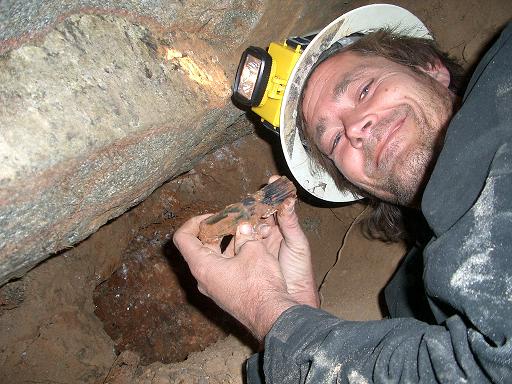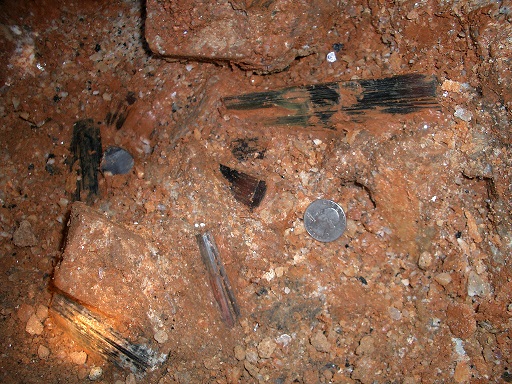|

|

|
|
Chris Rose and the Himalaya Mine
|
|
The world famous Himalaya Tourmaline Mine is located in Mesa Grande on quiet, Gem Hill across the valley from Mt. Polomar in San Diego County, California. The mine is an underground five mile labyrinth of steep passageways that were dug, drilled, and blasted over the past 100 years.
There are several gem-grade tourmaline mines in San Diego County, but the Himalaya Mine is the most prominent tourmaline mine in the world! Opened in 1898, the Himalaya Tourmaline Mine is known for producing tons of beautiful gem quality green and pink tourmalines. An estimated 250 thousand pounds of tourmaline and mineral specimens have been extracted from the mine. The Himalaya Mine produced more tourmaline than any other tourmaline mine in the world, for 15 years, including an amazing 5.5 tons in 1904 (the most tourmaline ever produced in one year). But, that’s not hard to imagine considering some of the largest pockets have produced roughly a ton of tourmaline. The tourmaline is found in pegmatite veins that run at a 45 degree angle deep into the earth. Several pegmatite dykes on Mesa Grande contain tourmaline. The Himalaya Mine is located on the largest tourmaline pegmatite dykes. Pink, green, bi-colored, tri-colored, and watermelon tourmalines can be found here. Approximately 5 percent of the tourmalines produced are gem-grade. Many tourmaline specimens have also been extracted from the mine, some of which can be seen at the Smithsonian Museum of Natural History.
|

|
|
Himalaya Mine Tourmaline Pocket
|
|
Tourmaline is a complex mineral, a hexagonal boron-aluminum-silicate structure which can occur in any color. The most common elbaite colors found at the Himalaya Mine is pink (rubillite) and green. On extremely rare occasions, blue tourmaline (indicolite) can be found here. Tourmaline crystal structure is of the trigonal system and is the only mineral with three sides, like a prism. This can be seen by viewing the cross sections of the nicer tourmalines. Tourmalines also have an electrical charge causing it to become polarized when heated, therefore, acting like a magnet, attracting light objects, like ashes. Some other minerals found here are quartz, apatite, morganite, clevelandite, calcite, lepidolite, feldspar, stibiotantalite, topaz, and spessartine garnet.
|
